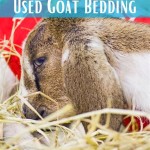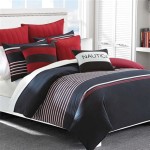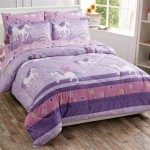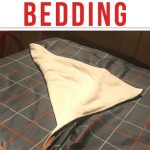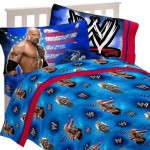What Is A Nursery Bedding Set Made Of?
Creating a cozy and safe haven for your little one is a top priority for any expecting parent. One of the most important elements is choosing the right nursery bedding set. But with so many options available, it can be overwhelming to know where to start. In this article, we'll dive into the essential aspects of what nursery bedding sets are made of, helping you make informed choices that will ensure a comfortable and stylish sleeping environment for your baby.
1. Fabrics
The fabric of the bedding set is paramount for both comfort and safety. Here are the most commonly used materials:
- Cotton: Soft, breathable, and hypoallergenic, cotton is an excellent choice for all seasons. It's also easy to wash and maintain.
- Flannel: Warm and cozy, flannel is ideal for colder climates. It's made from brushed cotton, creating a soft and fuzzy texture.
- Muslin: Lightweight and airy, muslin is perfect for warmer temperatures. It's also very absorbent and allows for good airflow.
- Bamboo: Derived from bamboo fibers, bamboo fabric is incredibly soft, moisture-wicking, and antibacterial.
- Organic Materials: If you're concerned about chemicals and toxins, consider bedding sets made from organic cotton or bamboo. These materials are grown without the use of harmful pesticides or fertilizers.
2. Fillings
Nursery bedding sets often include a comforter or quilt filled with various materials to provide insulation and warmth. The most common fillings include:
- Down: Natural down feathers are lightweight, fluffy, and provide excellent insulation. However, they can be expensive and may not be suitable for babies with allergies.
- Synthetic Down: Made from polyester fibers, synthetic down provides similar warmth and insulation to natural down but is more affordable and hypoallergenic.
- Cotton: Cotton batting is a natural and breathable filling that provides good insulation and moisture absorption.
- Wool: Known for its temperature-regulating properties, wool keeps babies warm in winter and cool in summer. It's also naturally flame-resistant.
3. Safety Features
Safety should be a top concern when choosing nursery bedding. Look for these important features:
- Breathability: The fabric and fillings should allow for good airflow to reduce the risk of suffocation.
- Flame Resistance: The materials should be treated with a flame retardant to prevent the spread of fire.
- Hypoallergenic: Choose bedding made from materials that are less likely to cause allergies or irritations.
- No Loose Parts: Ensure the bedding doesn't have any loose buttons, ribbons, or ties that could pose a choking hazard.
4. Design and Style
Once you've considered the essential aspects, you can focus on the design and style of the nursery bedding set. Here are some factors to keep in mind:
- Color Scheme: Choose a color scheme that complements the overall decor of the nursery.
- Patterns: Decide whether you want solid colors, patterns, or a combination of both.
- Theme: If you have a theme for

Lambs Ivy Forever Friends 4 Piece Nursery Crib Baby Bedding Set Blue Pink The Market Place

Juju Nursery 7 Piece Crib Bedding Set Balancing Animals Babymama

Juju Nursery Balancing Animals 7 Piece Crib Bedding Set The Nest Attachment Paing Hub

Baby Crib Bedding Set For Boys 3 Pieces Soft Toddler Nursery Sets With Comforter Fitted Sheet Skirt Standard Size Grey Elephants Ca

Crib Bedding Set For Boys And Girls 8 Piece Baby Nursery Jungle

Bacati Little Sailor 10 Piece Nursery In A Bag Boys Crib Bedding Set 100 Percent Cotton Percale With 2 Fitted Sheets For Us Standard Cribs Com

3 Piece Bedding Set Cute Sleeping Deer Baby Duvet Cover Crib Nursey Pillowcase Bed Linen With Frill

Juju Nursery Too Tall Giraffe 7 Piece Crib Bedding Set The Nest Attachment Paing Hub

Blue Gray Orange Dinosaur 12 Pc Crib Bedding Set Baby Nursery Quilt Diaper Stack

Safari Crib Bedding Set Baby Girl Pink Floral Elephant Nursery Jungle

